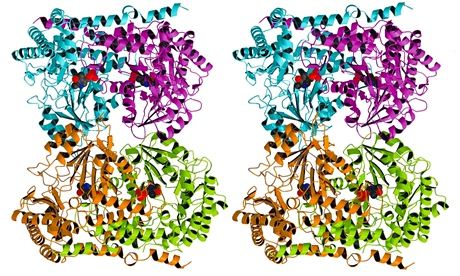GUARDIAN LETTERS:
21 October 2014

Stereoscopic image of an enzyme (serine hydroxymethyltransferase, SH) that is a potential target for anti-cancer drug development. The research work was carried out at The Institute of Cancer Research, University of London, and was published in the scientific journal Structure. Image: Dr Keith Snell
Readers wondering why a pair of stereoscopic images accompanied the story of Brian May’s Tate exhibition (Brian May turns up the stereo with Victorian 3D photos at Tate Britain, 21 October) when they need to be seen through “the lenses of a special viewer” can relax. The equipment is readily available in the form of your eyes. The technique is to hold the page about 12 inches in front of the face and focus on a point midway between the two images. Allowing the eyes to cross will combine the outer images into a central one which is then seen as stereoscopic.
Far from being a Victorian relic, such stereoscopic viewing is routinely used in scientific papers published in journals of structural molecular biology.
Dr Keith Snell
Cockermouth, Cumbria